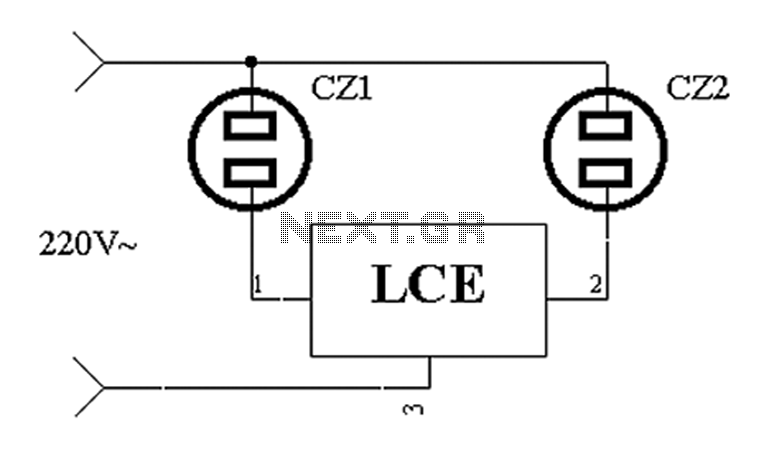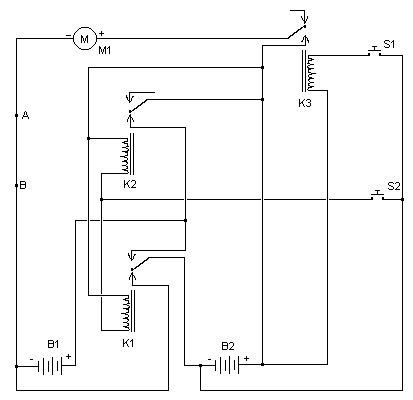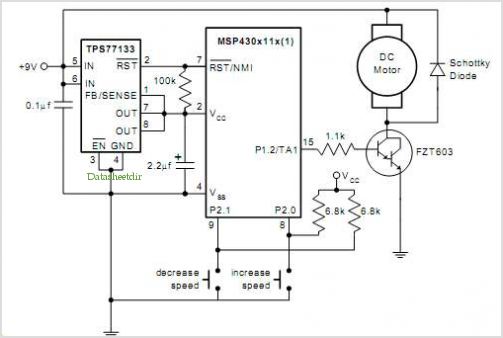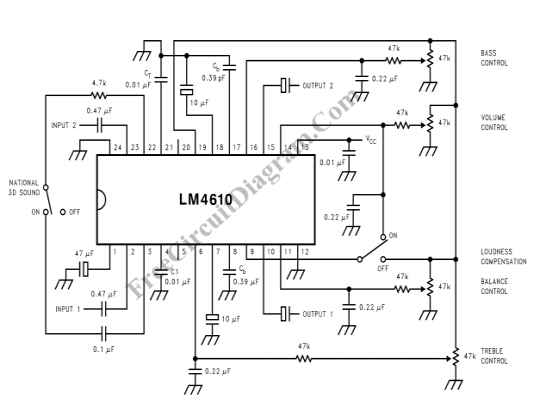
dc control for triacs
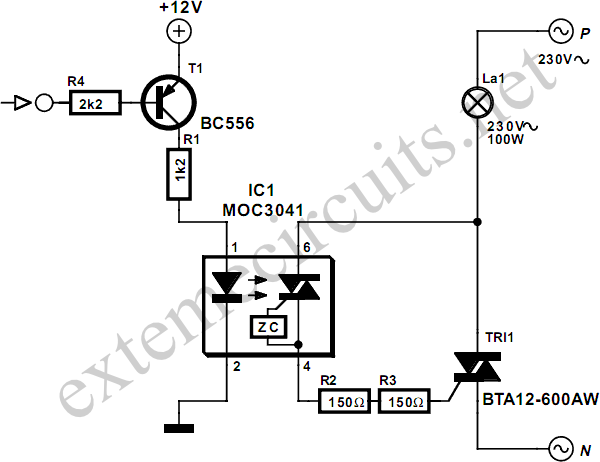
When switching a mains voltage, a relay serves as a straightforward solution for applications involving long switching times and high currents. However, for lower currents and applications requiring rapid switching, such as sound-to-light systems, a relay may not be suitable. Electrical isolation is often necessary, which eliminates the option of driving a triac through a transistor. In these cases, the MOC3041 optocoupler is employed, specifically designed for such applications, to control a power triac. This configuration ensures that the control circuit remains galvanically isolated from the mains supply. The internal structure of the optocoupler is more intricate than it appears in the circuit diagram. It features a specialized zero-crossing detector circuit that triggers the connected triac only when the alternating mains voltage approaches zero. This method reduces interference compared to triggering the triac at random phases within a cycle, allowing for the omission of a suppressor choke at the output. If brief pulses are expected at the optocoupler's input, a 220 nF capacitor should be added between the circuit's input and the emitter of T1 to extend the drive pulses. This ensures that the triac is triggered even by very short input pulses that might otherwise miss the zero-crossing point of the mains waveform. An AW-suffix type triac is recommended, as these types are less sensitive but possess higher dv/dt and di/dt ratings. The gate resistance should be constructed using two resistors in series, as standard resistors are not appropriate for direct use with mains voltages. Additionally, caution is required around the optocoupler; to ensure Class II isolation, the solder pads on the input and output sides must be separated by a minimum of 6 mm, which may necessitate bending the leads outward during soldering.
The described circuit utilizes the MOC3041 optocoupler for controlling a power triac in mains voltage applications, particularly where rapid switching is essential. The optocoupler provides electrical isolation, which is crucial for safety and performance. The zero-crossing detection feature minimizes electromagnetic interference and enhances the reliability of the triac operation.
In designing this circuit, attention must be given to the selection of the AW-suffix triac, which is suitable for applications that demand higher rates of change in voltage and current, thus improving robustness against noise and ensuring efficient operation. The series gate resistor configuration is critical for handling the high voltages present in mains applications, and the specified spacing for solder pads ensures compliance with safety standards, particularly for Class II devices.
For optimal performance, the addition of a 220 nF capacitor at the input of the optocoupler aids in pulse shaping, allowing the circuit to respond effectively to brief input signals. This design consideration is particularly important in applications where signal integrity and timing are paramount, such as in audio systems where synchronization with light effects is required.
Overall, this circuit design demonstrates a comprehensive approach to safely and effectively controlling high-voltage loads using modern electronic components while adhering to safety and operational standards.If a circuit is to switch a mains voltage, a relay is a simple solution in cases where switching times are long and high currents are involved. However, at lower currents, and in particular where rapid switching is required, such as in sound-to-light systems, a relay no longer ¬lls the bill.
Electrical isolation is often a requirement, which rules out driving a triac via a transistor. Here we use the MOC3041 optocoupler, which is specially designed for such applications, to drive a power triac. The control circuit therefore remains galvanically isolated from the mains. The internals of the optocoupler are somewhat more complex than appears from the circuit diagram. A special zero-crossing detector circuit in the optocoupler ensures that the connected triac is only triggered when the alternating mains voltage goes through zero.
This has the advantage of generating less interference compared to switching the triac at arbitrary phase in a cycle. Indeed, it means that we can dispense with the suppressor choke at the output that would otherwise be necessary.
If very brief pulses are likely to be present at the input to the opto-coupler, a 220 nF capacitor should be connected between the input of the circuit and the emitter of T1 to lengthen the drive pulses. This ensures that the triac will be triggered even with very short input pulses, which might otherwise miss the zero-crossing point of the mains waveform.
The triac should be an AW-suffix type. These types are less sensitive, but have higher dv/dt and di/dt specifications. The gate resistance must be constructed from two resistors connected in series, since normal resistors are not suitable for direct use with mains voltages. It is also necessary to exercise care around the opto-coupler. In order to guarantee Class II isolation the solder pads on the input and output sides must be separated by at least 6 mm.
The leads may therefore need to be bent outwards when soldering. 🔗 External reference
The described circuit utilizes the MOC3041 optocoupler for controlling a power triac in mains voltage applications, particularly where rapid switching is essential. The optocoupler provides electrical isolation, which is crucial for safety and performance. The zero-crossing detection feature minimizes electromagnetic interference and enhances the reliability of the triac operation.
In designing this circuit, attention must be given to the selection of the AW-suffix triac, which is suitable for applications that demand higher rates of change in voltage and current, thus improving robustness against noise and ensuring efficient operation. The series gate resistor configuration is critical for handling the high voltages present in mains applications, and the specified spacing for solder pads ensures compliance with safety standards, particularly for Class II devices.
For optimal performance, the addition of a 220 nF capacitor at the input of the optocoupler aids in pulse shaping, allowing the circuit to respond effectively to brief input signals. This design consideration is particularly important in applications where signal integrity and timing are paramount, such as in audio systems where synchronization with light effects is required.
Overall, this circuit design demonstrates a comprehensive approach to safely and effectively controlling high-voltage loads using modern electronic components while adhering to safety and operational standards.If a circuit is to switch a mains voltage, a relay is a simple solution in cases where switching times are long and high currents are involved. However, at lower currents, and in particular where rapid switching is required, such as in sound-to-light systems, a relay no longer ¬lls the bill.
Electrical isolation is often a requirement, which rules out driving a triac via a transistor. Here we use the MOC3041 optocoupler, which is specially designed for such applications, to drive a power triac. The control circuit therefore remains galvanically isolated from the mains. The internals of the optocoupler are somewhat more complex than appears from the circuit diagram. A special zero-crossing detector circuit in the optocoupler ensures that the connected triac is only triggered when the alternating mains voltage goes through zero.
This has the advantage of generating less interference compared to switching the triac at arbitrary phase in a cycle. Indeed, it means that we can dispense with the suppressor choke at the output that would otherwise be necessary.
If very brief pulses are likely to be present at the input to the opto-coupler, a 220 nF capacitor should be connected between the input of the circuit and the emitter of T1 to lengthen the drive pulses. This ensures that the triac will be triggered even with very short input pulses, which might otherwise miss the zero-crossing point of the mains waveform.
The triac should be an AW-suffix type. These types are less sensitive, but have higher dv/dt and di/dt specifications. The gate resistance must be constructed from two resistors connected in series, since normal resistors are not suitable for direct use with mains voltages. It is also necessary to exercise care around the opto-coupler. In order to guarantee Class II isolation the solder pads on the input and output sides must be separated by at least 6 mm.
The leads may therefore need to be bent outwards when soldering. 🔗 External reference
